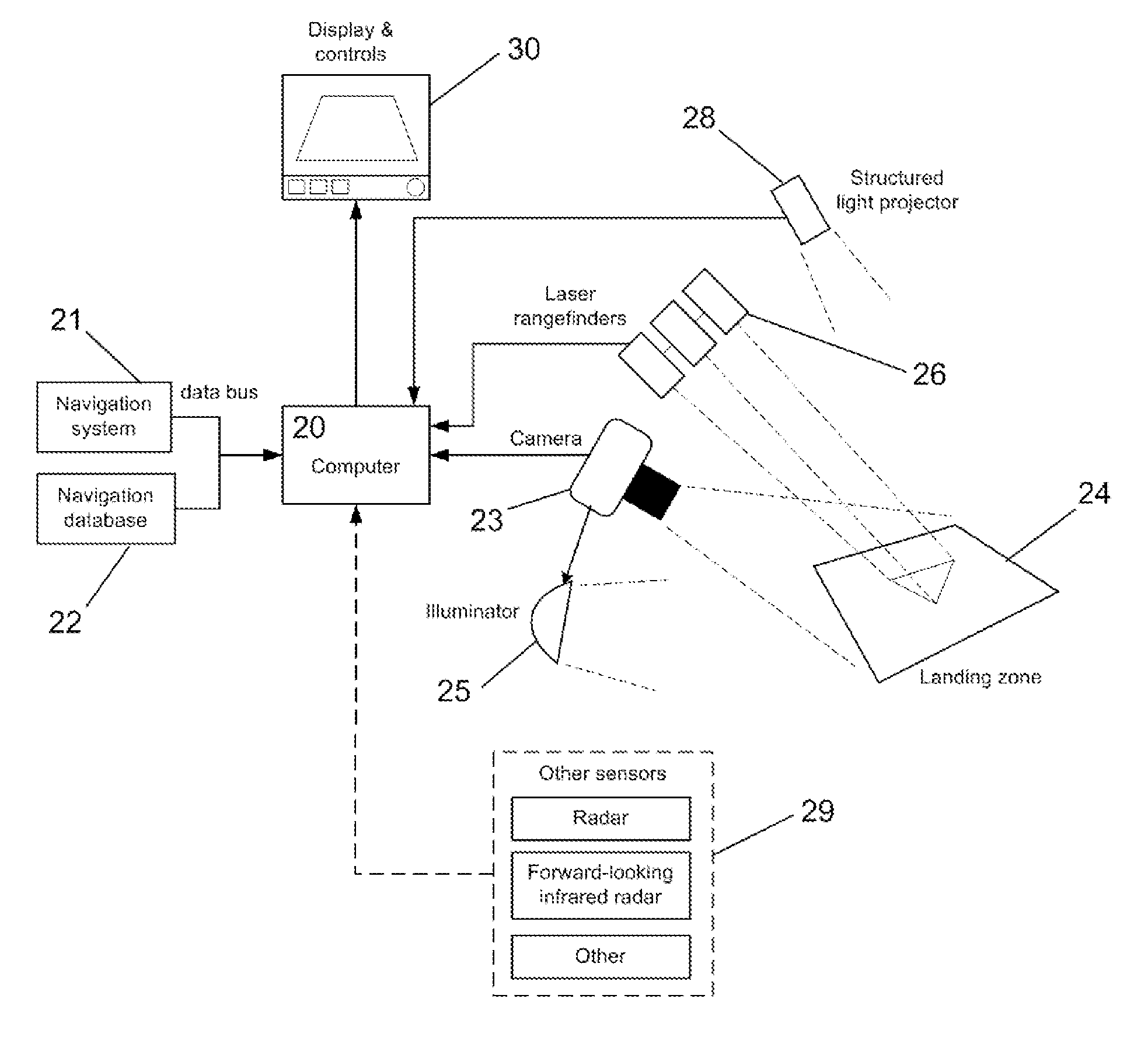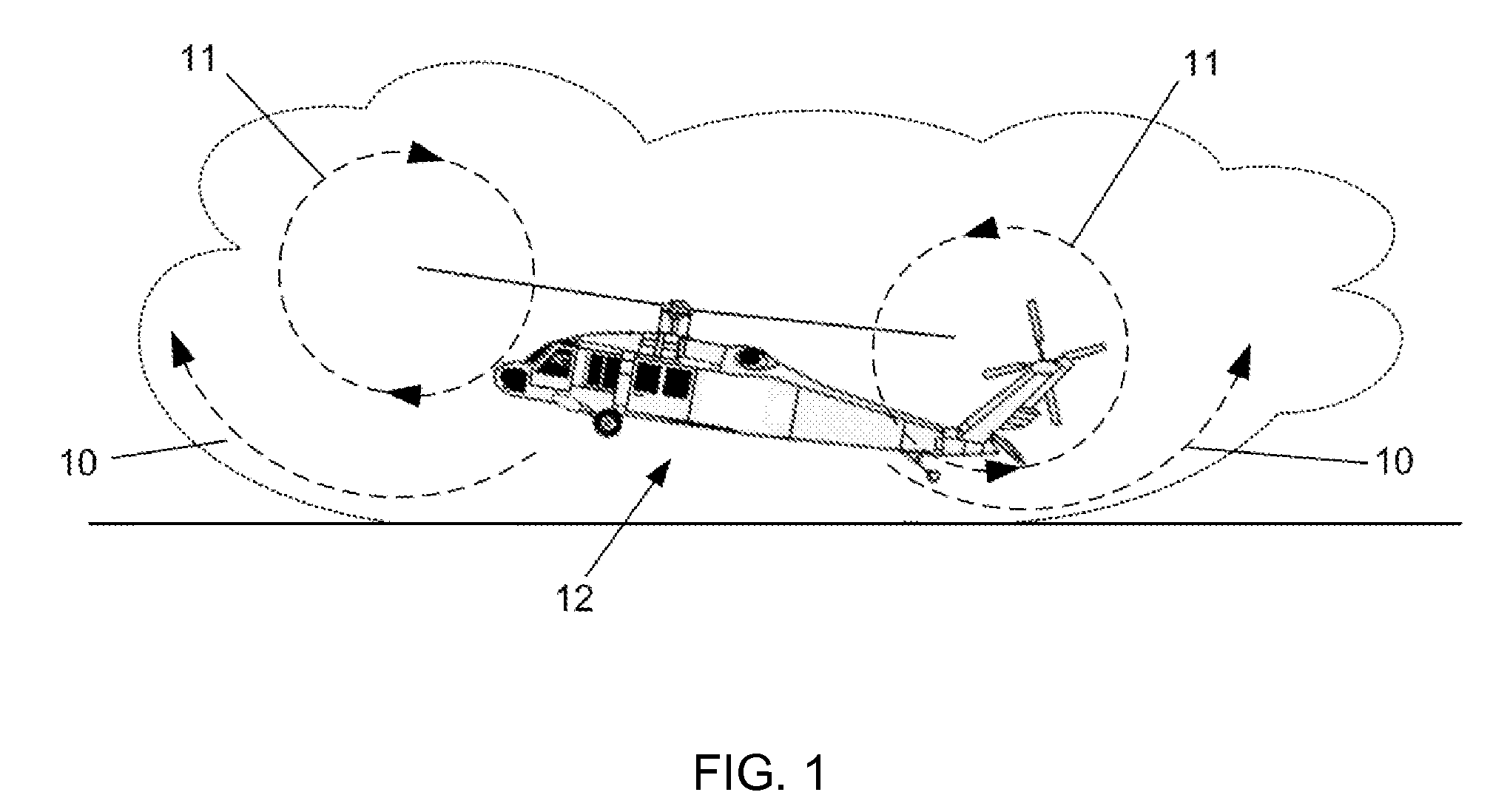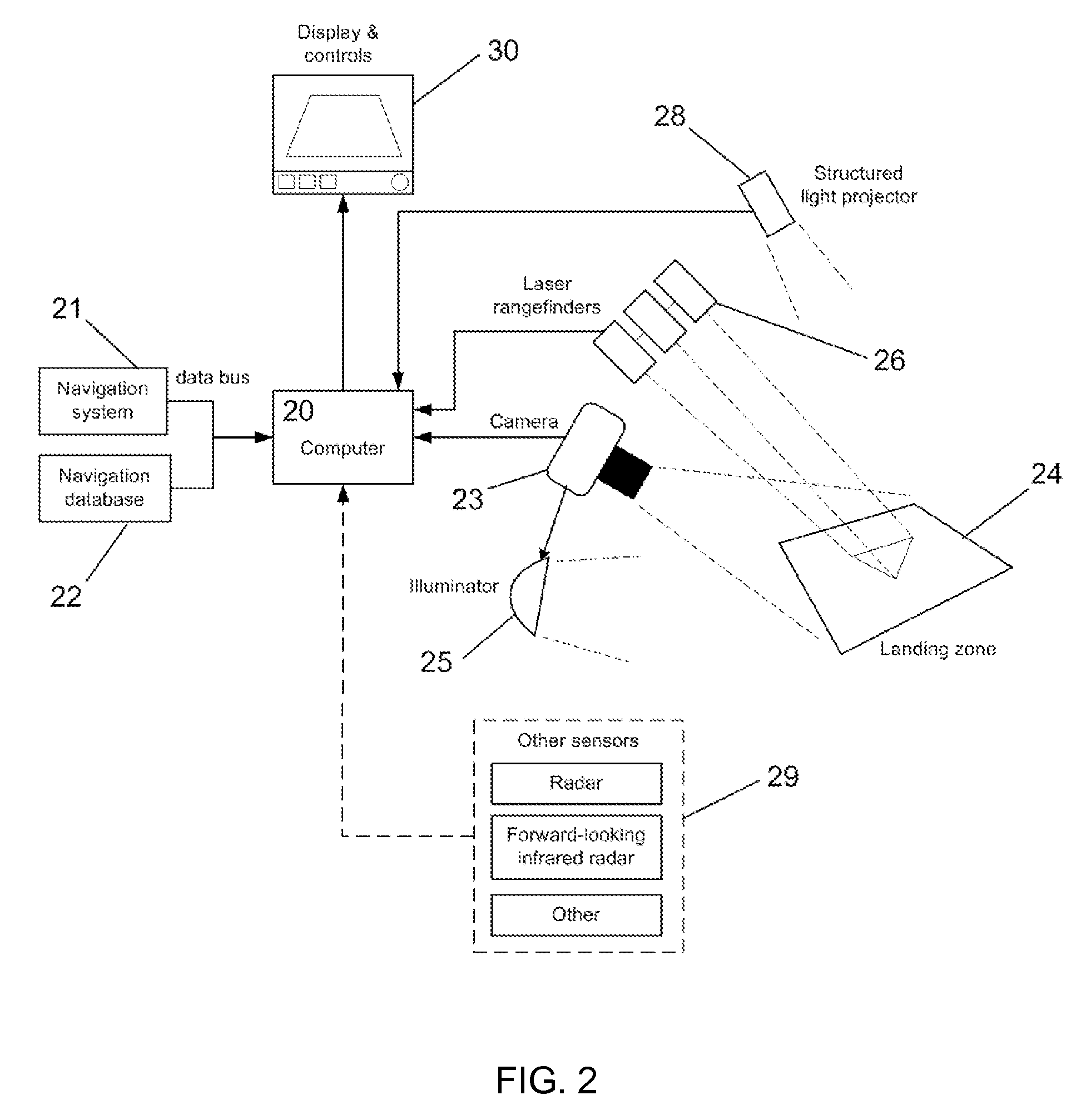Imaging and display system to aid helicopter landings in brownout conditions
a technology of brownout conditions and display systems, applied in the direction of landing aids, instruments, navigation instruments, etc., can solve the problems of inability of the crew to execute their mission, damage to equipment, death, dangerous low/zero visibility conditions, etc., to improve orientation and situational awareness, safe and effective operation
- Summary
- Abstract
- Description
- Claims
- Application Information
AI Technical Summary
Benefits of technology
Problems solved by technology
Method used
Image
Examples
Embodiment Construction
[0037]An imaging and display system provides helicopter pilots with an unobstructed display of a landing area in a brownout or whiteout condition by capturing a high resolution image of the landing area prior to obscuration. Using inertial navigation information from the aircraft or an independent system, the invention transforms the image to a desired viewpoint and overlays a representation of the helicopter's current position relative to the landing area. The system thus greatly improves orientation and situational awareness, permitting safe and effective operation under zero visibility brownout conditions. FIG. 2 depicts the elements of one embodiment of the imaging and display system. The heart of the system is a processing element, such as a computer 20. Other processing elements, such as various types of logic circuit, are within the scope of the invention. The computer accepts information on the position and attitude of the helicopter from a navigation system 21. As shown in ...
PUM
 Login to View More
Login to View More Abstract
Description
Claims
Application Information
 Login to View More
Login to View More - R&D
- Intellectual Property
- Life Sciences
- Materials
- Tech Scout
- Unparalleled Data Quality
- Higher Quality Content
- 60% Fewer Hallucinations
Browse by: Latest US Patents, China's latest patents, Technical Efficacy Thesaurus, Application Domain, Technology Topic, Popular Technical Reports.
© 2025 PatSnap. All rights reserved.Legal|Privacy policy|Modern Slavery Act Transparency Statement|Sitemap|About US| Contact US: help@patsnap.com



